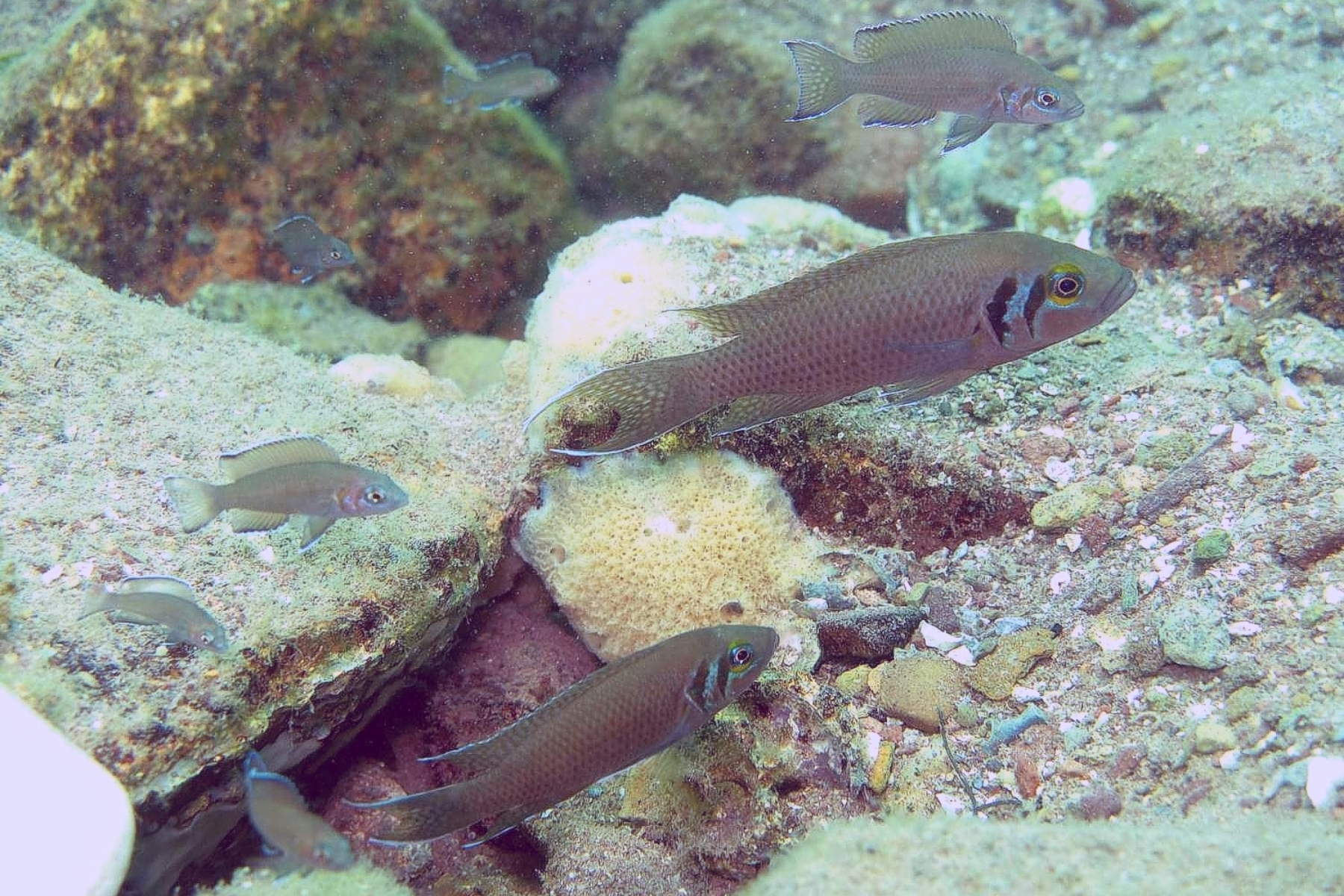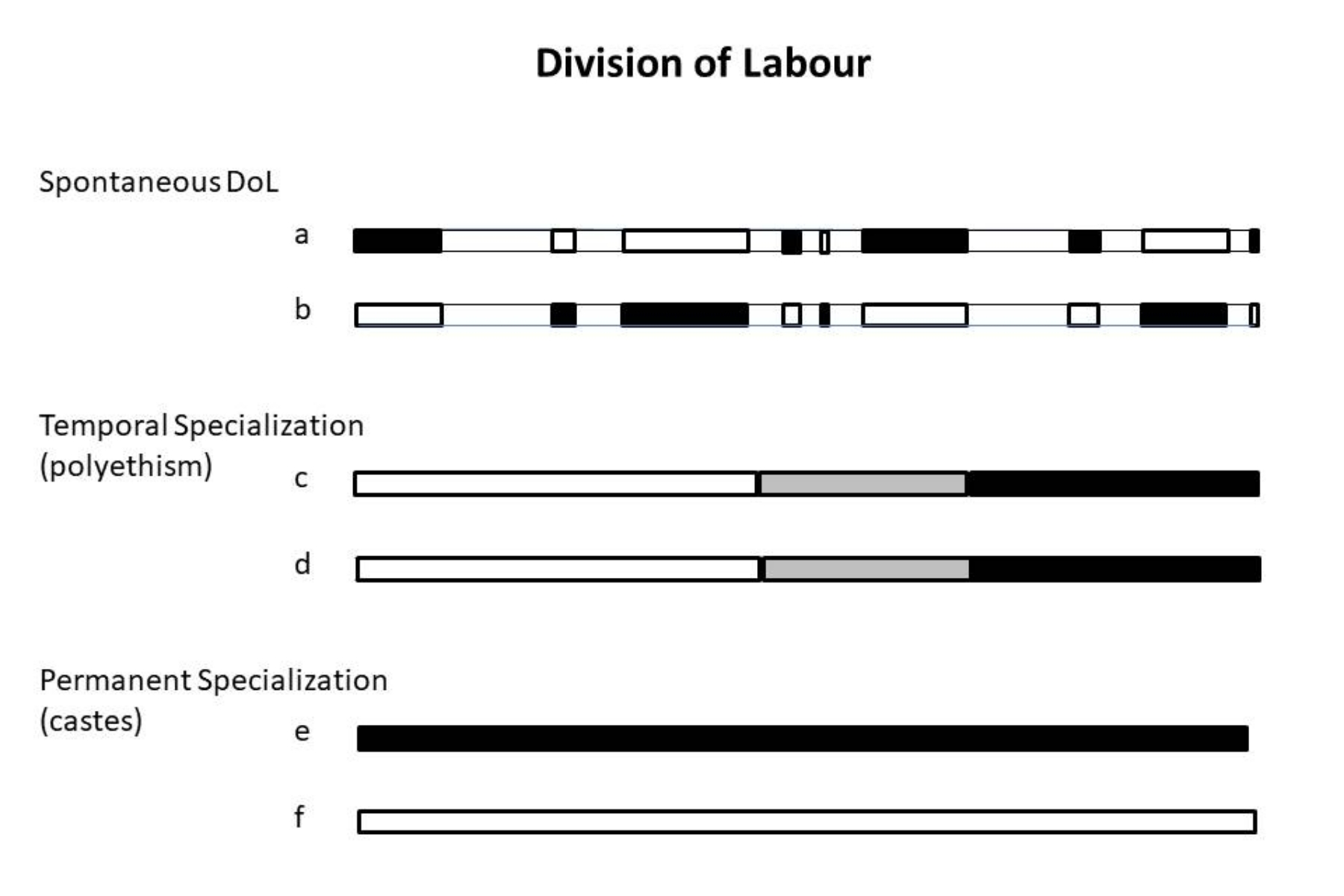Division of labor: a recipe for the success of social species
A new special volume, initiated and edited by researchers from the University of Bern, examines the biological roots of the division of labor – from microorganisms to humans. It shows that task specialization and division of labor are fundamental characteristics of ecologically successful organisms and represent a milestone on the way to complex social structure.
Division of labor is the recipe for success in human society. However, individual specialization and division of labor also characterize other social organisms that are exceptionally productive, efficient and successful in their environment – from microbes to social insects and to cooperative vertebrates. Common principles underlie the evolution of division of labor and its consequences in different organisms, which can help to explain the evolution of complex social structures.
The similarities, but also important differences between different organisms and social systems have now been worked out by researchers from 16 countries and published in a special volume of the Philosophical Transactions of the Royal Society B, the world's first and oldest scientific journal. The results show that the division of labor is a key factor in social evolution. The specialization of group members in certain activities and the exchange of services among each other enable an enormous increase in efficiency in the execution of a wide variety of tasks.
Ecologically successful organisms
In humans, the advantages of task sharing were evident already in early societies in the procurement of food through gathering, cultivation and hunting. The effects are particularly obvious in the production of goods in modern industrial society. In social insects, so-called queens specialize in egg production, and their offspring are then cared for, nurtured and protected by specialized workers and soldiers. Ants and termites, in particular, provide impressive examples of the division of labor. "The ecological success of ants, whose total biomass comes close to that of humans, clearly demonstrates the advantages and increased efficiency that can result from the division of labor," says Prof. Dr. Barbara Taborsky from the Institute of Ecology and Evolution at the University of Bern, who co-initiated and edited the special volume.
Spontaneous to lifelong division of labor
"We can distinguish between three different forms of division of labor: spontaneous division of tasks, temporary specialization and lifelong differentiation," explains Prof. em. Dr. Michael Taborsky from the Institute of Ecology and Evolution at the University of Bern, who co-edited the volume. A spontaneous division of tasks does not result in longer-lasting specialization, and possible advantages through experience and training effects hardly take effect. The situation is different when group members temporarily specialize in certain activities. In honey bees, for example, in the course of their short lives workers switch from tasks inside the hive, such as cleaning the cells and feeding larvae, to external duties, which includes foraging and defending the hive. Worker bees hence specialize in certain tasks for a certain period of time, but do not stick with them for the rest of their lives. Other tasks, such as reproduction on the one hand and supporting activities on the other, are fixed for life. Queen bees, for example, are very successful in producing eggs but can neither raise nor defend their brood. Worker bees, on the other hand, are infertile and therefore cannot produce own offspring, but they are very efficient at obtaining food and rearing the queen’s brood. This lifetime differentiation of tasks constitutes the "caste system" of social insects, in which each part takes on certain tasks that are important for the survival of the entire colony.
Division of labor creates dependencies
Nevertheless, as the researchers show in the special volume, division of labor also poses challenges. "Social cichlids, for example, which divide up various tasks within the group, would not be able to react flexibly to short-term requirements such as an acute threat from egg predators, if they were strictly assigned to certain activities. They therefore benefit from the ability to adjust to current conditions," explains Barbara Taborsky. The development of a permanent division of labor leads to mutual dependencies that are difficult to reverse.
Despite the obvious enhancement of productivity in a society based on the division of labor, strong specialization can reduce the ability to respond flexibly to pressing requirements. "This lesson can be drawn from the analysis of the biological roots of human division of labor - in short, no benefit without corresponding costs. Finding the ideal compromise between specialization and flexibility is a central challenge for any form of society," concludes Michael Taborsky.
Publication details:M. Taborsky, J.H. Fewell, R. Gilles & B. Taborsky (2025). Division of labour as key driver of social evolution. Phil. Trans. R. Soc. B 380: 20230261. |
About the Division of Behavioral Ecology, University of BernThe Division of Behavioral Ecology at the Institute of Ecology and Evolution, University of Bern, studies the evolutionary mechanisms underlying animal behaviour in relation to ecological and social conditions. Together with other divisions, it creates a scientific foundation for understanding and preserving the living environment. The division investigates how organisms respond to and interact with their environment, including phenotypic responses at the individual level, genetic changes at the population level, and the evolution of key elements of animal behaviour and social systems. |
2025/03/20




